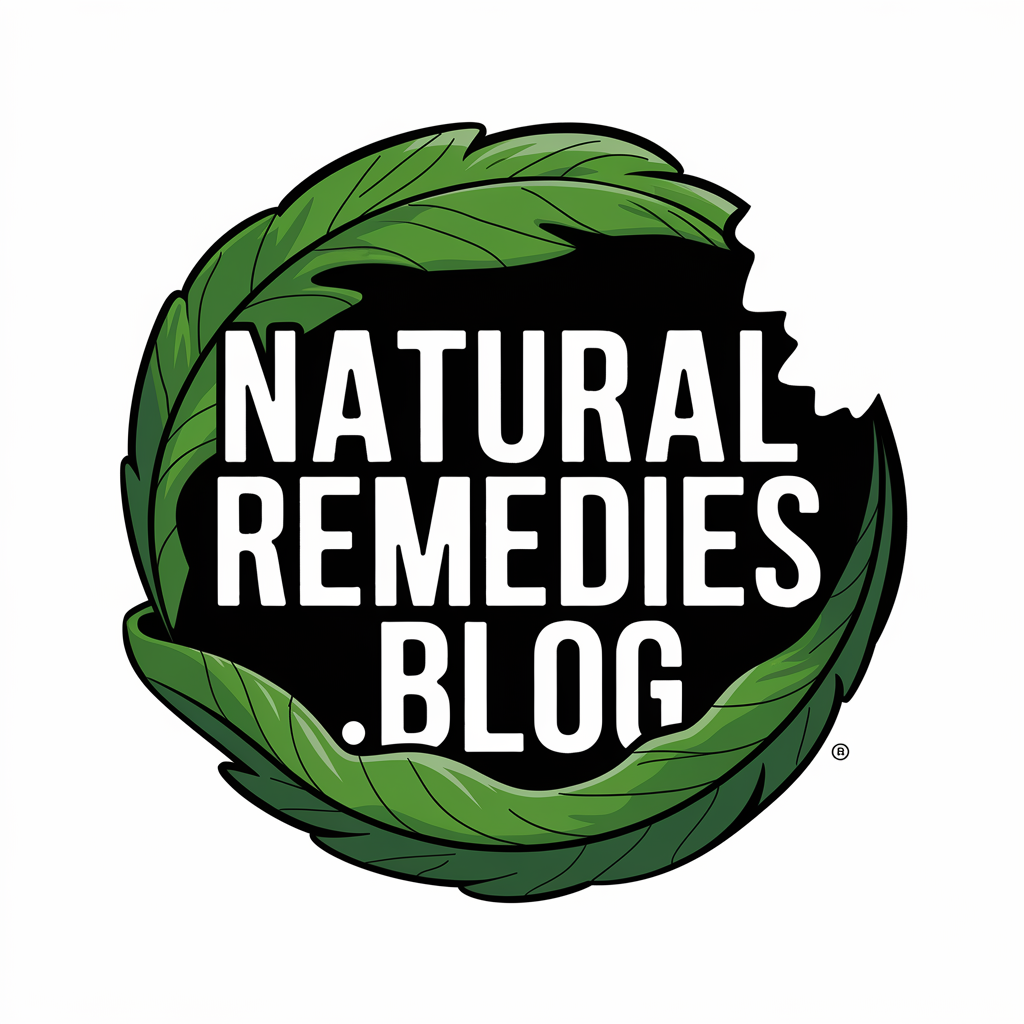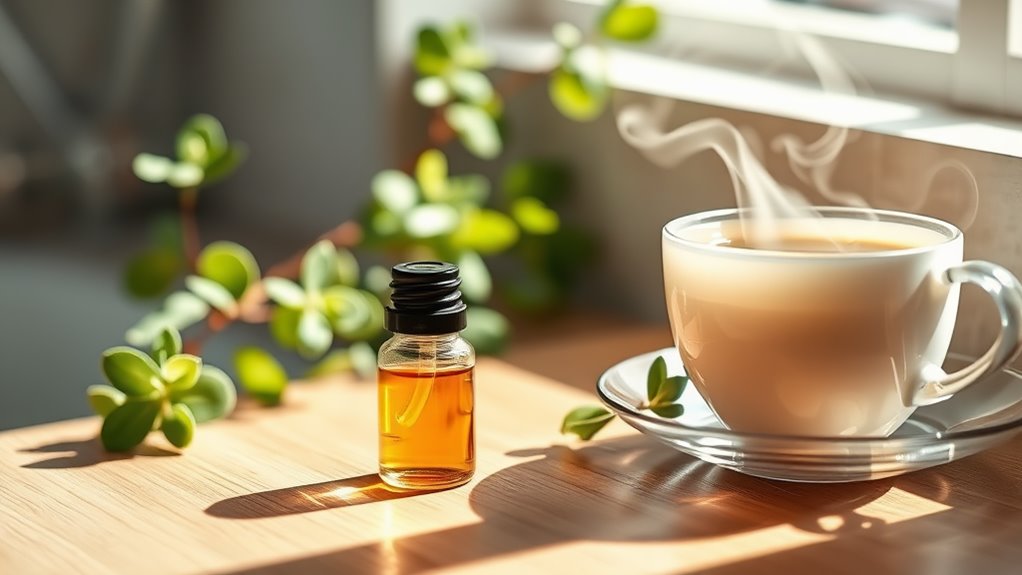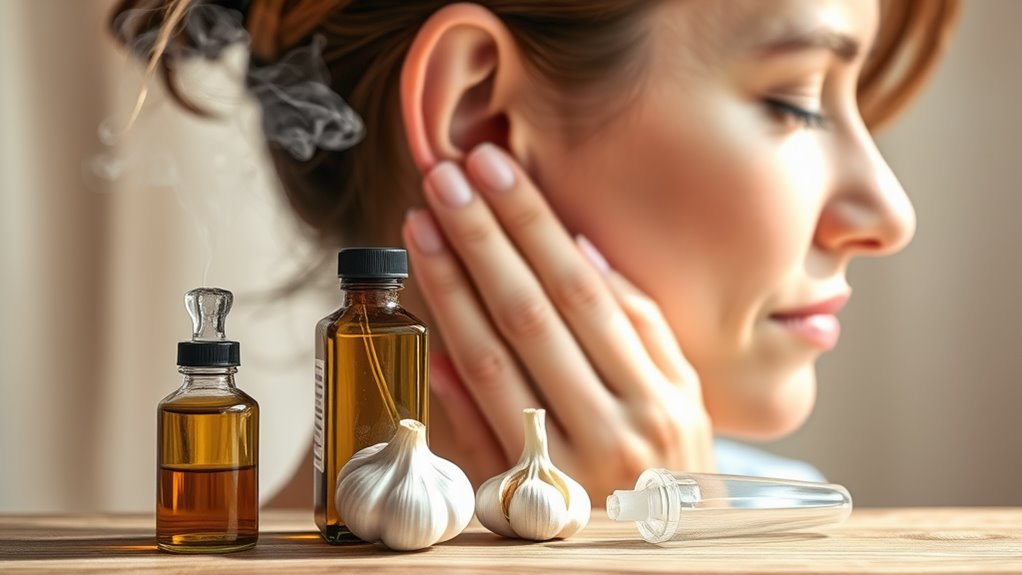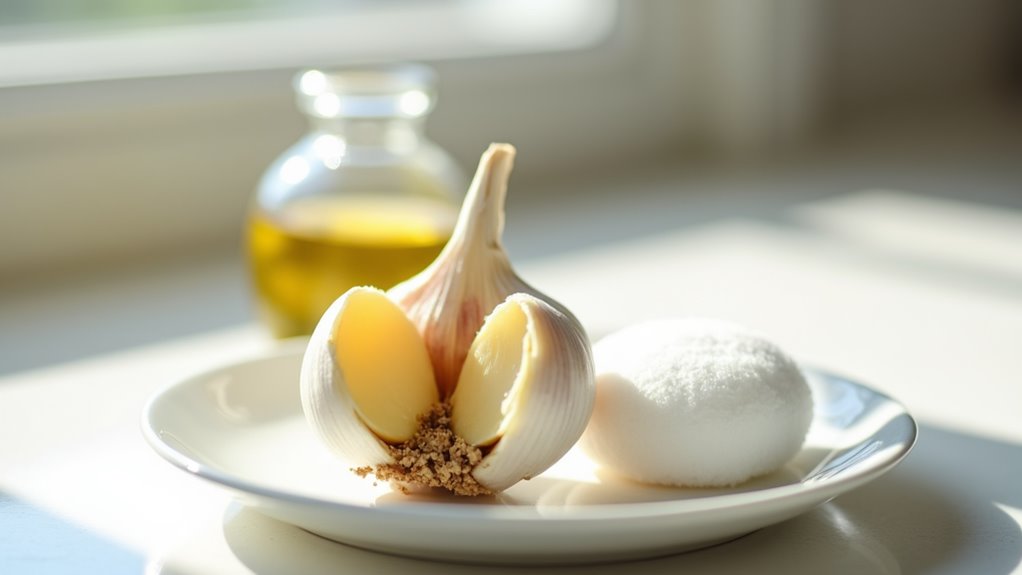Stop That Earache Naturally – Try These Simple Fixes
To stop that earache naturally, try using olive oil to soften earwax and alleviate pain. Cold therapy can numb discomfort, while heat promotes drainage. Herbal remedies like garlic and mullein oil fight infections and inflammation. Don’t forget to incorporate neck exercises to improve ear pressure regulation and relieve tension. Maintain proper ear hygiene to prevent future issues. There’s plenty more you can do to ease ear pain effectively, so keep exploring for additional tips and techniques!
Understanding Earaches: Common Causes
Earaches can be a distressing experience, often signaling various underlying issues.
You might encounter ear pain from infections in the outer, middle, or inner ear, often stemming from colds or bacteria. Ear pain is a symptom of various health conditions, and pressure changes during flying or swimming can cause discomfort too. In addition, excessive earwax buildup can block the canal, while foreign objects or sinus infections can lead to irritation. Even dental problems can cause referred ear pain. Knowing these common causes helps you identify potential triggers.
Olive Oil: A Soothing Solution
Have you ever considered olive oil as a gentle remedy for earaches? This natural option may soothe your discomfort. Here are some benefits to consider:
- Earwax Removal: It softens earwax, making it easier to expel.
- Antimicrobial Properties: Olive oil can help fend off infections due to its antimicrobial effects, which are important for reducing the risk of middle ear infections.
- Pain Alleviation: It may reduce pain related to ear infections. Earwax buildup can contribute to earaches, making this remedy particularly useful.
To use, apply 2-3 drops with an eyedropper, avoiding direct contact with the ear canal.
Remember to consult a doctor if your symptoms persist or worsen.
Always prioritize safety when considering this remedy.
Cold and Heat Therapy: Choosing the Right Option
When you’re dealing with earache discomfort, have you considered the benefits of temperature therapy?
Cold therapy can numb pain and reduce inflammation, making it effective for infections. Apply a cold compress for 15-20 minutes, using ice packs or frozen peas wrapped in a towel. It’s important to remember that ear infections often follow a cold or flu and might contribute to discomfort during treatment.
On the other hand, heat therapy relaxes muscles and enhances blood flow, promoting fluid drainage. Heat encourages muscles around ear canal to relax and improve fluid flow, so use a heating pad or warm cloth for temporary relief.
Alternating between hot and cold can offer enhanced benefits, improving circulation and managing pain.
Always consult a healthcare provider if your symptoms persist beyond a couple of days.
Herbal Remedies: Natural Alternatives
For those seeking natural alternatives to alleviate earache discomfort, herbal remedies offer a variety of effective options.
Consider trying these herbal solutions:
- Garlic oil: Its antimicrobial properties fight bacterial infections. Interestingly, garlic oil treatment can relieve ear pain within 12-24 hours using common kitchen ingredients.
- Mullein oil: This traditional remedy reduces inflammation and pain.
- Echinacea: Boosts your immune response against infections. OTC pain relievers can also be used alongside herbal remedies to enhance overall relief.
Each remedy can provide relief and support your healing process when applied correctly.
Always remember to test for allergies, sterilize tools before use, and consult a professional if symptoms worsen.
With these natural alternatives, you can tackle your earache effectively and holistically.
The Role of Neck Exercises
Neck exercises play a crucial role in relieving earaches by improving Eustachian tube function, which can help regulate pressure in your ears. Furthermore, doing these exercises regularly helps prevent complications such as inflammation in the middle ear, which can contribute to ear pain. By reducing muscle tension around the neck and jaw, these exercises also ease referred pain. Additionally, enhanced blood circulation from these movements promotes healing in the affected area. Incorporating certain OTC treatments can further support this relief process and provide additional comfort.
Improved Eustachian Tube Function
Eustachian tube function plays a crucial role in maintaining ear health and pressure balance, and it can be significantly influenced by the condition of your neck.
By integrating specific neck exercises into your routine, you can enhance Eustachian tube function:
- Head tilts: Stretch lateral neck muscles to ease strain.
- Jaw opening exercises: Relax adjacent muscles that support tube function.
- Chin tucks: Activate deep neck flexors for improved posture.
These exercises promote better tube mobility, potentially reducing ear fullness and discomfort.
Regular practice can enhance your overall ear health, making it easier for the Eustachian tube to function effectively.
Reduced Muscle Tension
Maintaining proper Eustachian tube function is important, but addressing reduced muscle tension in your neck can also significantly enhance ear comfort.
Tension in your neck muscles may exert pressure on the ear canal, leading to discomfort.
Incorporating neck exercises like rotations, shoulder rolls, and chin tucks can relieve this tension effectively.
Regularly practicing these stretches improves flexibility and reduces stiffness, which can alleviate referred pain.
Aim for frequent, consistent practice throughout the day to maintain relief.
Enhanced Blood Circulation
Boosting blood circulation can significantly impact your ear health, especially when you’re incorporating targeted neck exercises.
These exercises enhance oxygen delivery to your tissues, reduce inflammation, and support toxin removal.
Here are a few techniques to try:
- Perform gentle neck rotations to stimulate blood flow.
- Slowly tilt your head to each side to stretch your neck.
- Incorporate shoulder lifts for relaxation.
Aim to do these exercises several times a day for a few minutes each session.
Consistency helps improve circulation, which can alleviate ear discomfort and support overall ear function.
Lifestyle Adjustments for Ear Health
To maintain optimal ear health, proper hygiene and stress management are essential. Keeping your ears clean without using cotton swabs helps prevent irritation and infections, while mastering stress-reduction techniques can alleviate pressure that affects your hearing. Additionally, understanding common causes of earaches can help you take proactive measures to avoid discomfort.
Proper Ear Hygiene
Proper ear hygiene is essential for maintaining your overall ear health and preventing issues like infections and discomfort.
Remember these key practices:
- Clean your outer ear with a damp cloth to remove dirt and bacteria.
- Avoid cotton swabs, as they can push wax deeper and damage your ears.
- Only seek professional earwax removal if it causes discomfort or affects your hearing.
Your ears are naturally self-cleaning, so excessive cleaning isn’t necessary.
By following these simple steps, you’ll help ensure your ears remain healthy and free from unnecessary problems.
Prioritize your ear hygiene, and enjoy the benefits of better ear health!
Stress Management Techniques
How can managing your stress levels improve your ear health?
Reducing stress enhances your overall well-being, including your auditory health.
Mindfulness practices, like deep breathing and meditation, help calm your mind and decrease anxiety.
Regular exercise, such as walking or yoga, releases endorphins that boost your mood and combat stress.
A balanced diet and adequate sleep are crucial to supporting your body’s ability to manage stress.
Connecting socially with others offers emotional support, while nature exposure encourages relaxation.
Prioritizing self-care and engaging in hobbies can significantly lower stress, ultimately benefiting your ear health.
Importance of Proper Ear Care
Here are three key practices for maintaining ear health:
- Avoid cotton swabs to prevent injury and earwax impaction.
- Keep ears dry after swimming or showering to reduce infection risk.
- Limit noise exposure by using ear protection in loud environments. Proper ear care can also help in reducing susceptibility to ear infections which are common, especially during cold and flu season.
Complementary Treatments for Overall Relief
Maintaining ear health goes beyond prevention; it also involves finding relief when discomfort strikes.
Try alternating warm and cold compresses for 20 minutes; this can numb the pain and reduce inflammation.
Herbal ear drops with mullein or garlic may provide temporary relief and are clinically effective.
Warm olive oil or diluted tea tree oil can soothe earwax-related pain.
Also, neck exercises and proper hydration help equalize ear pressure.
Don’t forget your over-the-counter pain relievers like ibuprofen for inflammation.
Just remember, these methods won’t cure infections but can ease discomfort while you navigate your recovery. Furthermore, lifestyle factors such as smoking and cotton swab use may elevate your infection risks, so consider these when addressing earaches.
When to Seek Professional Help
When should you consider seeking professional help for an earache?
If your symptoms worsen or persist, it’s crucial to act swiftly.
Pay attention to the following signs:
- Persistent pain lasting more than three days.
- Fever or swelling around the ear.
- Difficulty hearing or fluid discharge.
These symptoms could indicate an infection or other serious conditions.
If you encounter severe symptoms, like neck stiffness or high fever, don’t wait.
Early intervention can prevent complications, particularly in children under two.
Reach out to a primary care provider or urgent care for guidance and treatment.
Taking action promptly can make all the difference.








